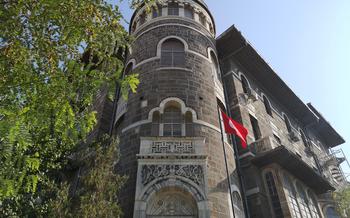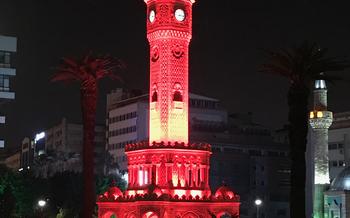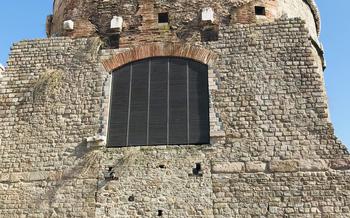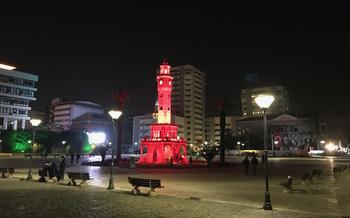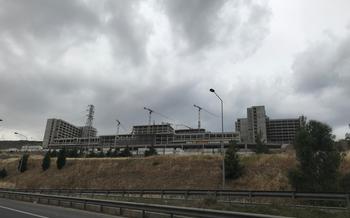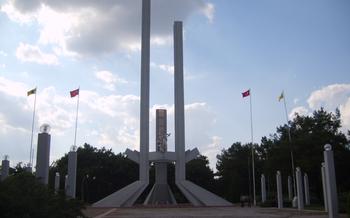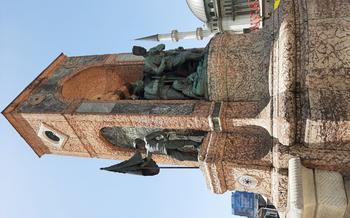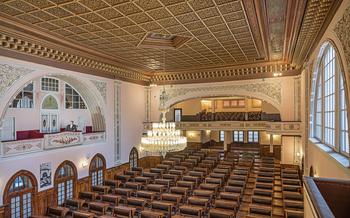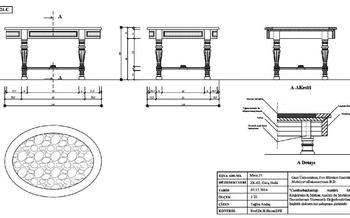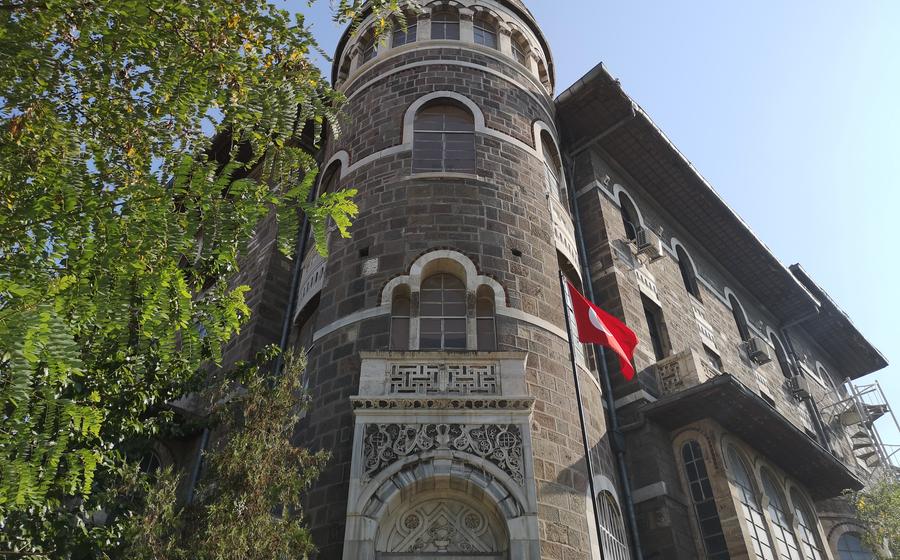
İzmir Atatürk Museum
- İzmir Atatürk Museum: A Legacy Unveiled
- Step into Atatürk's World: A Guided Tour
- Unveiling the Past: Museum Exhibits
- Witnessing Atatürk's Vision: The Study Room
- A Journey Through Time: The Library
- Exploring the Grounds: Outdoor Discoveries
- A Symbol of Resilience: The Clock Tower
- Paying Homage: The Mausoleum
- A Legacy that Lives On: The Museum's Impact
- Practical Information: Planning Your Visit
- Transportation and Connectivity
- Exploring the Neighborhood: Nearby Attractions
- Capturing the Moment: Photography and Videography
- Sustainable Tourism: Responsible Travel Practices
- Insider Tip: Unveiling Hidden Gems
İzmir Atatürk Museum: A Legacy Unveiled
Nestled in the heart of İzmir, the İzmir Atatürk Museum stands as a testament to the life and legacy of Mustafa Kemal Atatürk, the revered founder of modern Turkey. Once the residence of Atatürk during his stays in İzmir, this historic building has been transformed into a museum, inviting visitors to step into the world of this extraordinary leader and delve into the pivotal moments that shaped the course of Turkish history.
Established in 1941, the İzmir Atatürk Museum serves as a repository of Atatürk's personal belongings, artifacts, and documents, offering a glimpse into his daily life, accomplishments, and unwavering dedication to the nation. The museum's architectural style, a harmonious blend of Ottoman and modern influences, reflects the fusion of tradition and progress that characterized Atatürk's vision for Turkey. Its strategic location in İzmir, a city with which Atatürk had a deep connection, adds to the museum's significance and allows visitors to trace his footsteps in this vibrant metropolis.
Step into Atatürk's World: A Guided Tour
Guided tours of the İzmir Atatürk Museum are available in multiple languages, ensuring accessibility for visitors from diverse backgrounds. These tours provide a comprehensive journey through Atatürk's life and legacy, offering insights into his personal belongings, achievements, and connection to İzmir. Knowledgeable guides lead visitors through the museum's exhibits, shedding light on Atatürk's military campaigns, political reforms, and modernization efforts. They share anecdotes and historical context, bringing Atatürk's story to life and allowing visitors to gain a deeper understanding of his impact on Turkey's history.
The guided tour typically lasts around 45 minutes to an hour, providing ample time to explore the museum's highlights. Visitors can expect to see Atatürk's personal belongings, such as his uniforms, medals, and writing instruments. These artifacts offer a tangible connection to the man who shaped Turkey's destiny. The tour also includes a visit to Atatürk's study room, where visitors can see the desk, chairs, and other furnishings that he used during his time in İzmir.
The cost of the guided tour is minimal, making it an affordable way to delve into Atatürk's life and legacy. Reservations are recommended to avoid disappointment, especially during peak tourist season. Whether you are a history buff, a culture enthusiast, or simply curious about one of Turkey's most revered figures, the guided tour of the İzmir Atatürk Museum is an enriching and educational experience not to be missed.
Unveiling the Past: Museum Exhibits
The İzmir Atatürk Museum houses a treasure trove of exhibits that unveil the remarkable life and achievements of Mustafa Kemal Atatürk, the revered founder of the Turkish Republic. These thematic displays transport visitors on a journey through Atatürk's personal and professional milestones, showcasing an array of artifacts, documents, and multimedia presentations.
Interactive displays bring to life key moments in Atatürk's military campaigns, political reforms, and nation-building efforts. Visitors can delve into his strategic thinking through detailed maps and models, gaining insights into his leadership and decision-making prowess. Personal items, such as uniforms, medals, and handwritten letters, offer a glimpse into Atatürk's character and his dedication to his nation.
Historical documents, including the Proclamation of the Republic and the Treaty of Lausanne, serve as tangible reminders of Atatürk's pivotal role in shaping the course of Turkish history. Rare photographs capture candid moments from his life, providing a window into his charisma and connection with the Turkish people. These exhibits collectively paint a vivid portrait of Atatürk's legacy, his vision for a modern and progressive Turkey, and his enduring impact on the nation's history.
Witnessing Atatürk's Vision: The Study Room
At the heart of the İzmir Atatürk Museum lies a room that holds immense significance in understanding the mind and vision of Mustafa Kemal Atatürk. The study room, preserved in its original state, offers visitors a glimpse into the private workspace where Atatürk made critical decisions and shaped the course of Turkish history.
Original furnishings, including Atatürk's desk, chair, and personal belongings, adorn the room, creating an atmosphere of authenticity and reverence. Visitors can almost sense the presence of Atatürk as they step into this sacred space, where ideas were formed, strategies were devised, and the foundations of modern Turkey were laid.
The study room is a testament to Atatürk's tireless work ethic and unwavering dedication to his nation. The desk, worn from countless hours of writing and contemplation, speaks volumes about his commitment to progress and reform. The bookshelves, filled with volumes on history, politics, and military strategy, reflect his insatiable thirst for knowledge and his intellectual prowess.
More than just a physical space, the study room represents the embodiment of Atatürk's vision for Turkey. It is here that he conceived the principles of secularism, nationalism, and modernization that would shape the country's future. The room stands as a symbol of Atatürk's transformative leadership and his unwavering belief in the potential of the Turkish people.
Stepping into Atatürk's study room is a profound experience that allows visitors to connect with the great leader on a personal level. It is a place where history comes alive, where the echoes of Atatürk's thoughts and aspirations still reverberate, inspiring generations to come.
A Journey Through Time: The Library
Within the walls of the İzmir Atatürk Museum lies a treasure trove of knowledge, a literary sanctuary that once held the attention of Turkey's revered leader. The library, with its extensive collection of books, documents, and maps, served as Atatürk's personal reading space, a place where he delved into a diverse range of subjects, from history and politics to military strategy and philosophy.
The significance of this library goes beyond its impressive collection; it offers a glimpse into Atatürk's intellectual pursuits and interests. As visitors peruse the shelves, they catch a glimpse of the man behind the public figure, the voracious reader who sought knowledge and enlightenment in every written word. The library's atmosphere is one of quiet contemplation, where one can almost imagine Atatürk himself, immersed in his studies, seeking inspiration and guidance from the pages of countless volumes.
The library not only serves as a testament to Atatürk's insatiable thirst for knowledge but also as a reminder of the importance of preserving historical knowledge. The museum curators have meticulously maintained the library's original layout and ambiance, allowing visitors to step back in time and experience the space as Atatürk once did. It is a place where history comes alive, where visitors can connect with the mind and spirit of a man who shaped the course of Turkish history.
Exploring the Grounds: Outdoor Discoveries
Beyond the walls of the museum, visitors are invited to explore the lush gardens and serene outdoor spaces that surround the İzmir Atatürk Museum. These carefully manicured grounds played a significant role in Atatürk's daily life, providing him with a tranquil retreat from his official duties. The gardens, adorned with colorful flowers, fragrant shrubs, and towering trees, offered a sanctuary for contemplation and relaxation.
Statues, busts, and monuments honoring Atatürk are scattered throughout the outdoor areas, paying tribute to his legacy and contributions to Turkey. These sculptures, crafted by skilled artists, capture Atatürk's essence and convey his vision for a modern and progressive nation. Visitors can take a leisurely stroll through the gardens, admiring the artwork and reflecting on the life and achievements of this revered leader.
The outdoor spaces also serve as a place for visitors to pause and reflect on Atatürk's enduring legacy. Amidst the tranquility of the gardens, one can appreciate the profound impact Atatürk had on Turkey's history and its transformation into a modern and secular republic. The outdoor areas of the museum invite visitors to connect with Atatürk's vision and to contemplate the lasting significance of his contributions to the nation.
A Symbol of Resilience: The Clock Tower
Amidst the serene gardens of the İzmir Atatürk Museum stands a towering monument that embodies the resilience and spirit of the city: the iconic clock tower. Erected in 1930, the tower has become an inseparable part of the museum's landscape and a beloved landmark for İzmir's residents.
With its intricate architectural design and symbolic elements, the clock tower serves as a reminder of the city's ability to rise above adversity. Its sturdy structure, reminiscent of a lighthouse, guides visitors through time, marking significant events and milestones in İzmir's rich history.
The clock tower's prominent position within the museum grounds reflects its importance as a symbol of unity and progress. Its melodious chimes, which echo throughout the gardens, create a sense of nostalgia and reverence, inviting visitors to pause and reflect on the city's transformation over the years.
As a testament to İzmir's unwavering spirit, the clock tower stands as a beacon of hope, resilience, and determination, reminding visitors of the city's ability to overcome challenges and emerge stronger.
Paying Homage: The Mausoleum
In close proximity to the İzmir Atatürk Museum lies a solemn and awe-inspiring monument, the mausoleum of Mustafa Kemal Atatürk, the revered founder of the Turkish Republic. This grand structure not only serves as a resting place for Atatürk but also stands as a symbol of national pride and remembrance.
Designed by renowned architects Prof. Emin Onat and Orhan Arda, the mausoleum boasts an imposing yet elegant architectural style. Its monolithic form, clad in gleaming white marble, exudes an air of grandeur and reverence. The mausoleum is situated atop a hill, overlooking the city of İzmir, a testament to Atatürk's enduring legacy and his deep connection to the city.
Visitors to the mausoleum are greeted by a serene and contemplative atmosphere. As they approach the entrance, they are met with an eternal flame, a symbol of Atatürk's unwavering spirit and the eternal gratitude of the Turkish nation. A meticulously groomed honor guard stands vigil, their presence paying homage to the great leader's contributions to Turkey's independence and modernization.
Inside the mausoleum, visitors can pay their respects to Atatürk, whose remains lie in a marble sarcophagus. The atmosphere is one of deep reverence and solemnity, as visitors reflect on the life and achievements of this extraordinary figure. The mausoleum has designated visiting hours, and visitors are expected to adhere to strict protocols to ensure a respectful and dignified experience.
A visit to Atatürk's mausoleum is a profound and moving experience that leaves visitors with a lasting impression of the man who shaped the destiny of Turkey. It is a fitting tribute to his remarkable life and legacy, and a reminder of the enduring impact he has had on the nation he so passionately served.
A Legacy that Lives On: The Museum's Impact
The İzmir Atatürk Museum stands as a testament to the enduring legacy of Mustafa Kemal Atatürk, revered as the father of modern Turkey. This museum is not merely a repository of historical artifacts; it is a living institution dedicated to preserving and promoting Atatürk's vision and principles. Through educational programs, outreach initiatives, and exhibitions, the museum plays a vital role in fostering national pride and unity among Turkish citizens.
The museum's impact extends beyond Turkey's borders, gaining international recognition for its contribution to preserving Atatürk's legacy. Visitors from around the world come to İzmir to immerse themselves in the life and achievements of this remarkable leader. The museum serves as a symbol of Turkey's rich history and culture, inspiring and educating people from diverse backgrounds.
Practical Information: Planning Your Visit
**Planning a visit to the İzmir Atatürk Museum is essential to make the most of your experience. The museum's hours of operation are generally from 8:30 AM to 5:00 PM, closed on Mondays. Admission fees are minimal and provide access to all exhibits, including the study room and the library. The museum is designed to be accessible to visitors with disabilities, with ramps, elevators, and designated parking spaces available. To fully appreciate the museum's treasures, allocate at least two to three hours for your visit. To enhance your experience, consider booking a guided tour in your preferred language. Guided tours offer a deeper insight into Atatürk's life and legacy, making your visit more enriching and memorable.
Transportation and Connectivity
The İzmir Atatürk Museum's strategic location ensures effortless accessibility. Situated near major transportation hubs, the museum is a breeze to reach using various modes of transport. Whether you prefer the convenience of public transportation or the flexibility of a private vehicle, you'll find multiple options at your disposal.
Public Transportation:
-
Tram: Hop on the modern tram system and alight at the Konak stop, just a short walk from the museum.
-
Bus: Numerous bus routes service the area, making it easy to reach the museum from different parts of the city.
-
Metro: While the closest metro station is a bit further away, it offers a convenient alternative for those staying in the city center.
Private Transport:
-
Parking: Limited street parking is available in the vicinity, but it's advisable to arrive early or consider alternative parking options.
-
GPS Navigation: If driving, use GPS navigation to reach the museum and avoid getting lost in the city's vibrant streets.
Accessibility:
The museum is committed to providing a welcoming and accessible environment for all visitors. Features such as ramps, elevators, and designated parking spaces ensure that individuals with disabilities can fully enjoy their visit. If you have any specific accessibility requirements, don't hesitate to reach out to the museum staff for assistance.
Language Assistance:
Guided tours are available in multiple languages, including English, German, French, and Spanish, allowing international visitors to immerse themselves in the museum's exhibits and learn about Atatürk's legacy. Multilingual signage and brochures are also available to enhance the experience for non-Turkish speakers.
Exploring the Neighborhood: Nearby Attractions
İzmir Atatürk Museum is strategically located in the heart of Konak, surrounded by a wealth of historical sites, cultural landmarks, and museums. A short stroll from the museum, visitors can immerse themselves in the ancient world at the Agora of Smyrna, where ruins of temples, shops, and a theater await exploration. The İzmir Archeological Museum houses an impressive collection of artifacts from the region's rich past, including sculptures, pottery, and jewelry.
For those seeking a deeper understanding of İzmir's diverse heritage, the Jewish Quarter offers a glimpse into the city's vibrant past. With its historic synagogues, museums, and cultural centers, this neighborhood celebrates the contributions of the Jewish community.
Beyond these cultural gems, Konak is a vibrant hub of activity with bustling streets, lively markets, and charming cafes. Indulge in the flavors of Turkish cuisine at traditional restaurants or savor a cup of Turkish coffee while watching the world go by.
To experience the essence of İzmir's vibrant street life, venture into Kemeraltı, the city's historic bazaar. This labyrinthine network of narrow streets and covered markets is a shopper's paradise, offering everything from traditional handicrafts to fresh produce and spices.
By combining a visit to the İzmir Atatürk Museum with explorations of the surrounding area, visitors can create a well-rounded itinerary that immerses them in the rich history, culture, and vibrant energy of this captivating city.
Capturing the Moment: Photography and Videography
Photography and videography are permitted within the İzmir Atatürk Museum, allowing visitors to capture and share their experiences.
Designated areas are available for photography to ensure minimal disruption to other guests and the preservation of the exhibits.
Taking stunning photos and videos requires patience and consideration. Use natural light to capture the vibrant colors and details of the museum's interiors and exteriors. Consider using a tripod for stability and to avoid blurry images.
Flash photography is not permitted, as it can damage the delicate artifacts. Instead, use the available natural light or adjust your camera settings to achieve the desired exposure.
Share your experiences with the world by posting your photos and videos on social media using relevant hashtags. Tag the museum's official accounts to be featured and connect with fellow travelers who share your passion for history and culture.
Sustainable Tourism: Responsible Travel Practices
As you embark on your journey to the İzmir Atatürk Museum, it is crucial to adopt responsible travel practices that align with sustainable tourism principles. Here are some tips to minimize your environmental impact and contribute to the preservation of this historic site:
-
Embrace Public Transportation: Opt for public transportation, such as buses or trams, to reach the museum. This not only reduces carbon emissions but also supports the local transportation system.
-
Explore Local Cuisine: Indulge in the flavors of İzmir by visiting local restaurants and cafes. This not only supports the local economy but also allows you to experience authentic Turkish cuisine.
-
Respect Local Customs: Be mindful of local customs and traditions to ensure respectful interactions with the community. This includes dressing modestly, refraining from taking photos of people without their consent, and avoiding sensitive topics.
-
Reduce Plastic Waste: Minimize your use of single-use plastics by bringing your own water bottle and reusable shopping bags. The museum and surrounding areas offer refill stations for your convenience.
-
Explore Responsibly: While exploring the museum and its surroundings, stay on designated paths to prevent damage to the natural environment. Respect the tranquility of the site and avoid loud noises or disruptive behavior.
By embracing sustainable travel practices, you can contribute to the preservation of the İzmir Atatürk Museum and ensure its legacy for future generations while enjoying a fulfilling and responsible travel experience.
Insider Tip: Unveiling Hidden Gems
As you explore the İzmir Atatürk Museum, keep an eye out for some hidden gems that may not be immediately apparent. In a corner of the museum, you might stumble upon a small exhibit showcasing personal letters or handwritten notes by Atatürk, offering a glimpse into his private thoughts and reflections. Venture outside into the surrounding park, and you'll find hidden pathways leading to serene viewpoints overlooking the city.
For a truly authentic Turkish experience, step off the beaten path and explore the local eateries in the vicinity. Ask the friendly museum staff for recommendations, and they'll gladly point you towards hidden gems where you can savor delicious Turkish cuisine while immersing yourself in the local culture. Embrace the warmth and hospitality of the Turkish people, and you'll discover a side of İzmir that's both enchanting and unforgettable.
